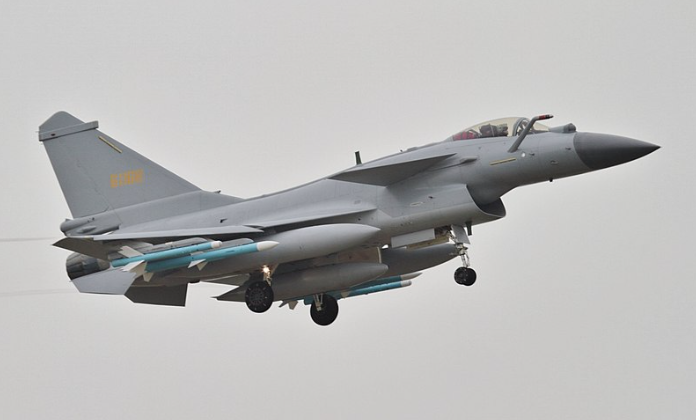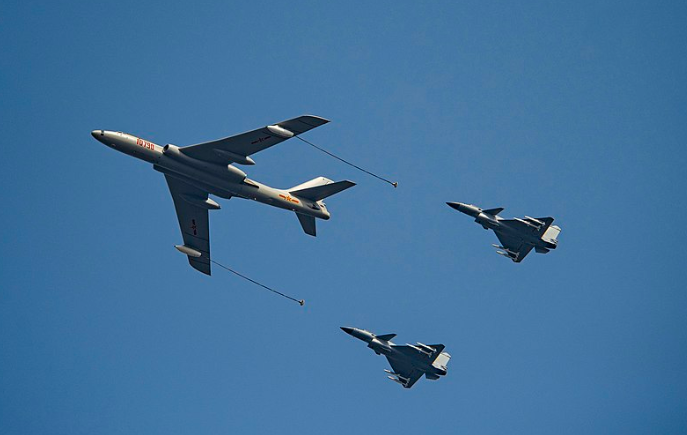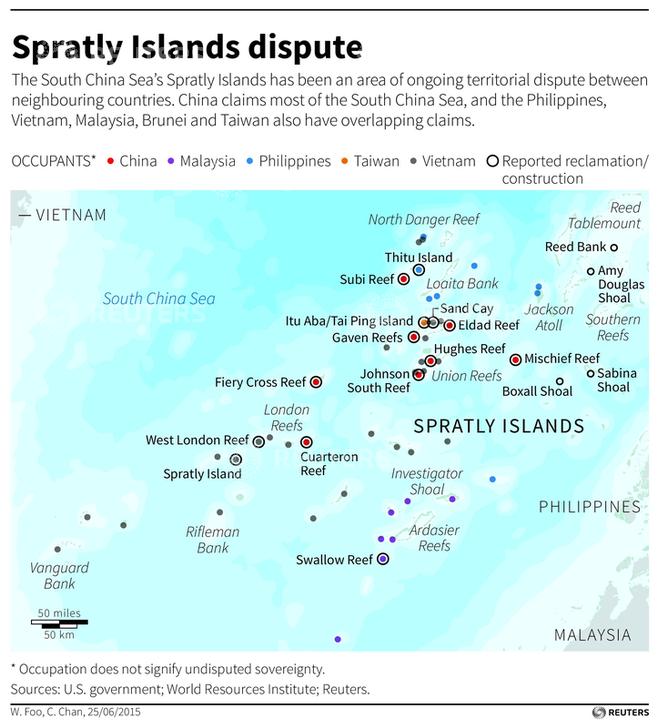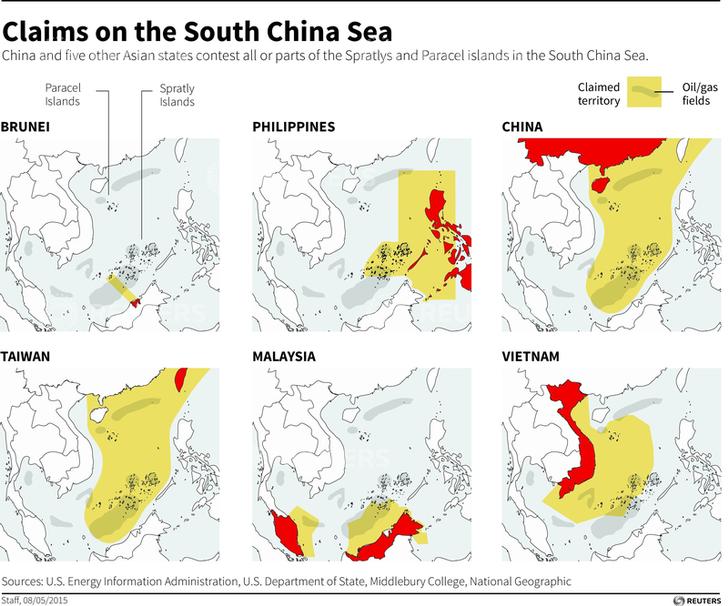A Chinese fighter jet carrying air-to-air missiles confronted a US Navy aircraft over the South China Sea on Friday and escorted the American plane for 15 minutes as it left the region.
The American Navy's Poseidon P-8 aircraft had on board news crew from CNN when the incident happened. The encounter occurred miles away from the disputed island chain of Paracel in the South China Sea. One of the islands in the Paracel chain hosts Chinese military bases.

"American aircraft. Chinese airspace is 12 nautical miles. Not approaching any more or you bear all responsibility," the pilot of the Chinese fighter jet warned. The CNN report says that the J-10 fighter aircraft of China's People's Liberation Armt (PLA) flew close to the American jet, coming within 500 meters at one point.
"PLA fighter aircraft, this is US Navy P-8A ... I have you off my left wing and I intend to proceed to the west. I request that you do the same, over," the P-8 commander replied.
According to a report by the Sputnik, the same US Navy aircraft encountered a PLA Navy warship in the disputed waters. TYhe encounter with Changsha, a Type 52D guided missile destroyer, happened in water claimed by the Philippines, the report says.

Paracels and Spratlys
At the core of the South China Sea conflict is the overlapping claims of sovereignty over two island chains -- Paracels and Spratlys -- and waters around them. China, Taiwan, Malaysia, the Philippines, Vietnam and Brunei have made claims to a clutch of shoals, rocky outcrops, atolls and sandbanks in the sprawling South China sea, making it a theatre of tense maritime dispute.

China lays claim to both the island chains stating that these were integral part of the empire from ages. In 1947 China formalised the claims by issuing a map showing the islands in its territory. But Vietnam has contested China's claims saying its rule over Paracels and Spratlys dates back to the 17th century.
Violent Disputes With Vietnam and Philippines
China scored decisive military victories over Vietnam in recent decades in its quest to cement claims over the island chains. In 1974, more than 70 Vietnamese soldiers died in China's military offensive that seized control of Paracels. In 1988 Vietnam lost Spratlys to China in another bloody military conflict.
China angered Vietnam and the Philippines in 2012 when it created Sansha city, making it the administrative headquarters for the Paracels. Again that year, Vietnam alleged China sabotaged its exploration operations, setting off massive anti-China protests in the country.

In 2014, China set up a drilling rig in waters near the Paracel Islands and in 2015 satellite images showed Beijing was building an airstrip on land reclaimed around the Spratlys.
The US Response
The US adopts a stern line against China's land reclamation, construction and militarisation in these islands but China staunchly defends its claim to sovereignty in the region.
The US too has US military facilities in Southeast Asia -- Philippines and Thailand. It also has stationed its Poseidon sub-hunters and electronic warfare platforms in Malaysia and Singapore.
Why Paracels are of Strategic Importance?

The mostly uninhabited islands in South China Sea are of crucial strategic importance. The two major island chains -- the Paracels and the Spratlys -- are thought to harbour natural resources around them. China hopes the oil and natural gas reserves in the region could ensure its energy security. The sea is also a major trading route through which ship-borne trade worth $5 trillion passes every year.
For energy hungry China the sea routes in the South China Sea are crucial as most of its imported oil flows through these routes. Control over the territory allows Beijing to prevent the US from expanding its sphere of influence in the region.









